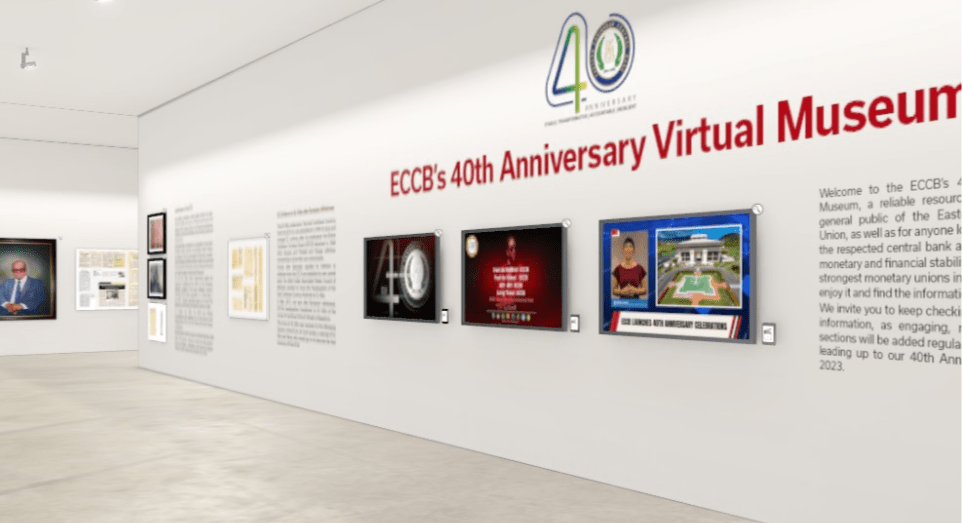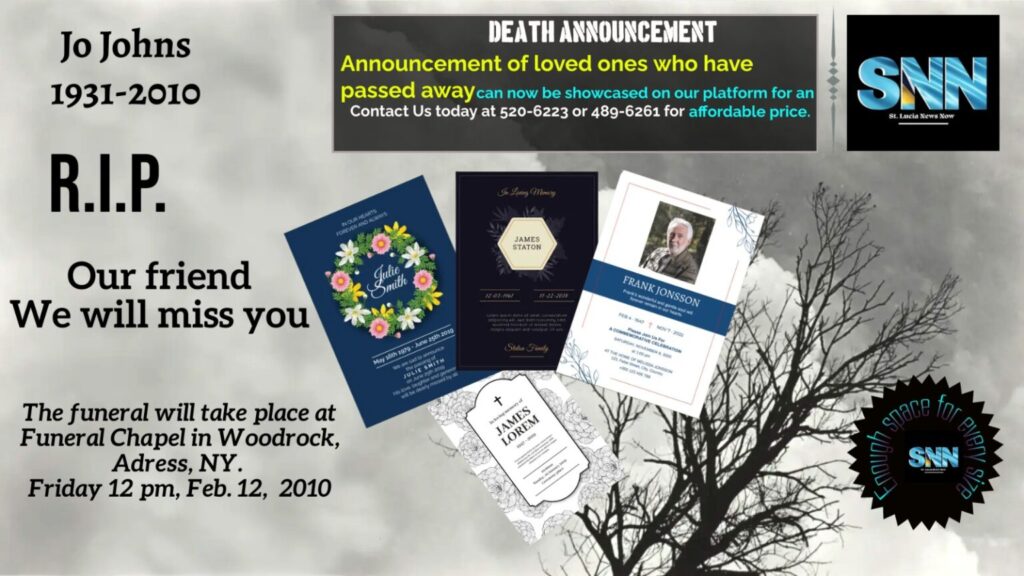Eastern Caribbean Central Bank’s Virtual Museum Launched
By ECCB


The Eastern Caribbean Central Bank’s Virtual Museum went live on 5 July, marking the 40th Anniversary of the signing of the ECCB Agreement in 1983.
The Eastern Caribbean Central Bank began official operations on 1 October, 1983.
The Virtual Museum https://eccbvirtualmuseum.v21artspace.com/ is intended to be a reliable resource for the people of the Eastern Caribbean Currency Union especially students, as well as for anyone looking to learn more about our highly respected Central Bank and its role in maintaining monetary and financial stability in one of the strongest monetary unions in the world.
Visitors to the Virtual Museum will be transported back in time, thanks to a treasure trove of archival newspaper clippings dating back to 1972 when Barbados and the Associated States were discussing the question of Barbados’ withdrawal from the East Caribbean Currency Authority, the precursor organisation to the Eastern Caribbean Central Bank.
Multimedia content, such as videos, photographs and newspaper clippings, will continue to be added to the Virtual Museum over the next several months. Viewing is recommended on either Google Chrome or Firefox.
Initially, visitors will be able to tour six Exhibits, including an expansive section featuring newspaper articles and related photographs of coins and paper currency.
This Currency exhibit showcases, for instance, an ECCB press release from November 1984, announcing the issuance of the $10 note – the first banknote to bear the title of the Eastern Caribbean Central Bank. Visitors will also see accompanying specimen images of the $10 banknote.
Another exhibit titled The Lives and Times of… will be mostly crowdsourced from an open call for submissions.
Interested persons should submit a published news story that focuses on the life and times of someone who previously served or currently serves the ECCB in some capacity whether as an employee, Board member, or member of the Monetary Council. To find out how to submit your contribution, please visit The Lives and Times of… Exhibit in the ECCB’s Virtual Museum.
Managing the Virtual Museum Project are Policy Analyst II in the Governor’s Immediate Office, Valencia Grant, who serves as Research Lead and Curator, and Systems Analyst II in the Management Information Systems Department, Marvin Jones, who serves as Technical Lead and Design Liaison.
The ECCB’s 40th Anniversary Planning Committee chaired by Deputy Governor of the ECCB, Dr. Valda F. Henry also provides invaluable creative support. The Virtual Museum was built and designed by V21 Artspace. A full list of acknowledgements can be found in the Virtual Museum.
The ECCB’s Virtual Museum forms part of the robust Communications Strategy of the Central Bank, which recently won the prize for Best Communications Initiative in the 2023 Central Banking Awards.
The ECCB was awarded for ECCB Connects, a weekly public education programme, which first aired on 6 April, 2016 and is produced entirely in-house by a small production team led by Acting Director and Communications Specialist in the Corporate Relations Department, Shermalon Kirby.
“What I hope to achieve is an easy way for the citizens in the region to be able to stay in touch with the Bank, and frankly for the Bank to stay in touch with them. This is about serving the people of the Region – making it easier, making it simple, making it plain, making it accessible [through our communications],” ECCB Governor, Timothy N.J. Antoine noted in August 2017, a year and a half after assuming the helm of the Central Bank.
In commenting on the launch of the Virtual Museum, the ECCB Governor observed: “Today represents another important advance of our vision. By documenting and paying homage to those on whose shoulders we stand, we are preserving the great legacy of the ECCB while ensuring it receives the attention it so richly deserves. We encourage everyone to visit our Virtual Museum and furnish us with your feedback. After all, your feedback is a gift which we can use to make the Museum even better.”




